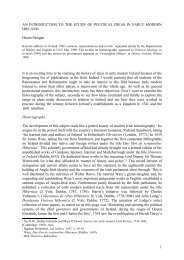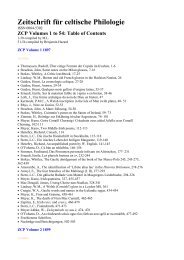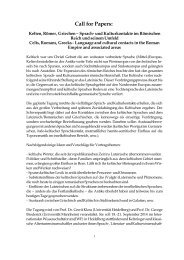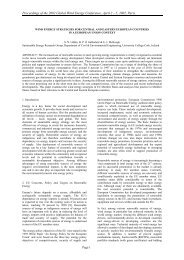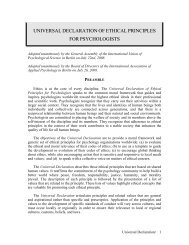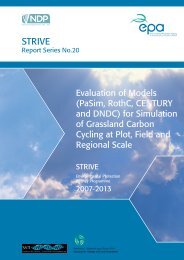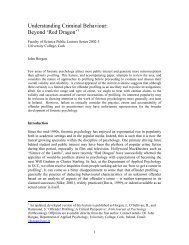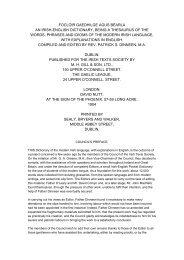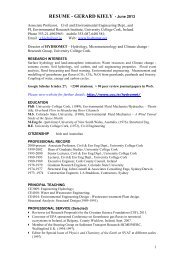PhD Thesis, 2007 - University College Cork
PhD Thesis, 2007 - University College Cork
PhD Thesis, 2007 - University College Cork
You also want an ePaper? Increase the reach of your titles
YUMPU automatically turns print PDFs into web optimized ePapers that Google loves.
Chapter 5<br />
CO 2 fluxes<br />
The time series of day and night fluxes were divided into twelve bimonthly bins<br />
over the two-year dataset and filtered for predetermined realistic threshold values<br />
for the season. Approximately 15% of the data in 2003 and 2004 were rejected<br />
during rainfall periods and within one hour after rain. After post-processing and<br />
filtering, 43.4% of the CO 2 flux data for 2003 (~60% day and 30% night data) and<br />
50.6% for 2004 (~69% day and 35% night data) was good and suitable for further<br />
analysis. Most night data that was rejected was outside the growing season.<br />
The gaps in the time series were filled with non-linear regression equations defined<br />
using the Curve Fitting Function of MATLAB 6.5 (MathWorks Inc., USA)<br />
software for monthly (May and June 2003, March and April 2004) or bimonthly<br />
periods. For day data, the best gap filling functions were rational functions of<br />
polynomials in one variable of different orders that relate the 30-minute CO 2 flux<br />
either with air temperature (January-February and May 2003, April 2004) or with<br />
Q (all other periods). For night data an exponential Q 10 gap filling function was<br />
defined for the full two-year period and related the half hour flux with the 20 cm<br />
deep soil temperature.<br />
In 2003, between Julian day 145 and 155 (25 th May to 4 th June) no data were<br />
logged due to an electricity outage. The missing meteorological data were replaced<br />
with the last 5 good days of data before the outage and the first 5 days of good data<br />
after the outage except for precipitation. Precipitation data were obtained from a<br />
comparison with the nearby Valentia weather station (~30 km west of the site, 51°<br />
56' N, 10° 14' W) records. The EC system suffered a break, in 2003 between Julian<br />
day 141 and 177 (21 st May to 26 th June). The 36 days gap in the EC CO 2 flux was<br />
filled using gap filling equations based on meteorological measurements. Notably<br />
the missing May fluxes were determined with a function based on air temperature,<br />
defined for the first 21 good days of the month. The 26 missing flux days in June<br />
were calculated with a rational function of polynomials of degree one based on Q,<br />
derived from the averaging of the same type of function for May and July-August<br />
2003.<br />
73



